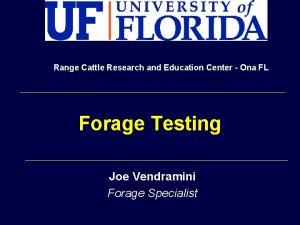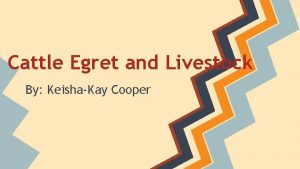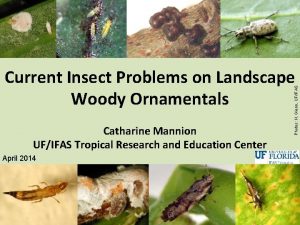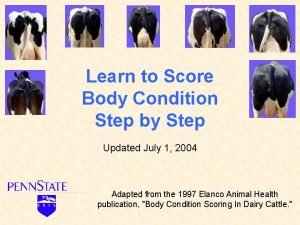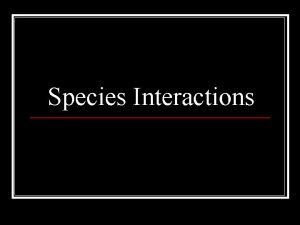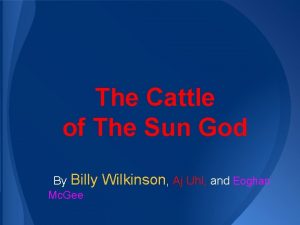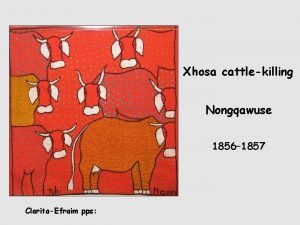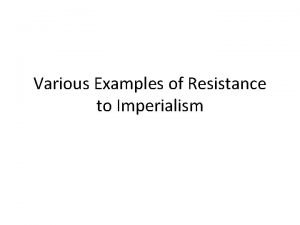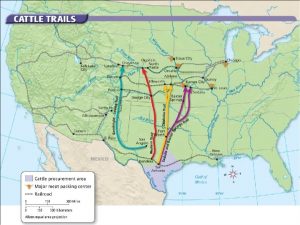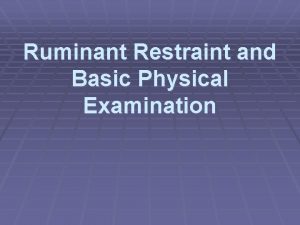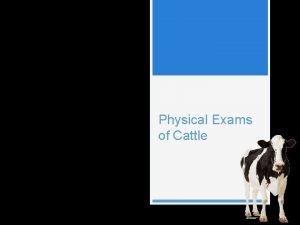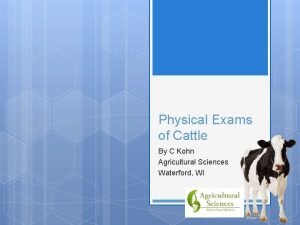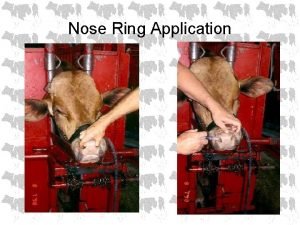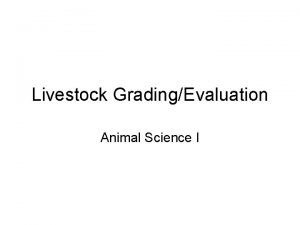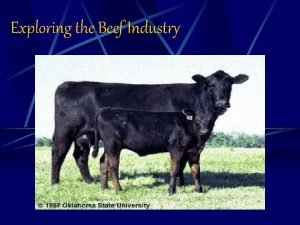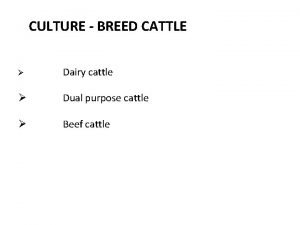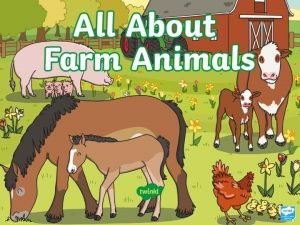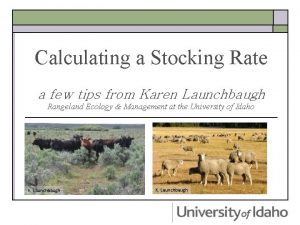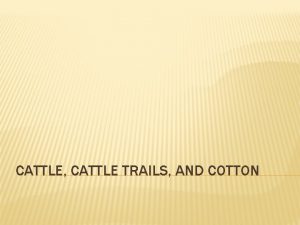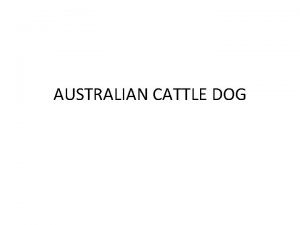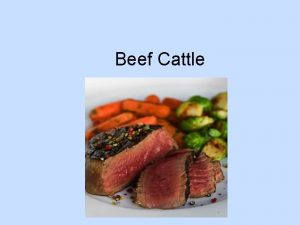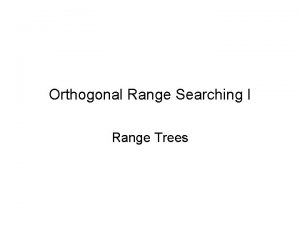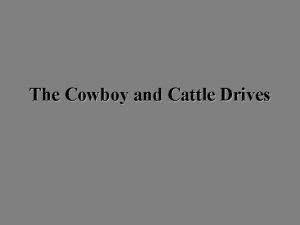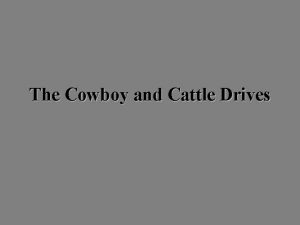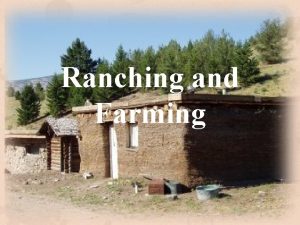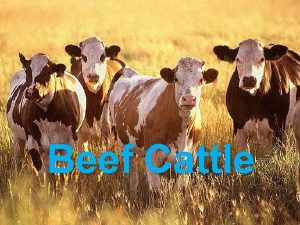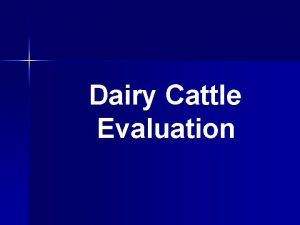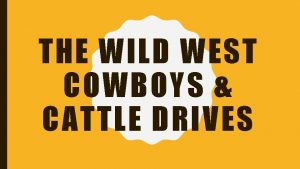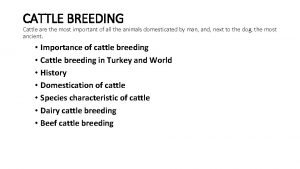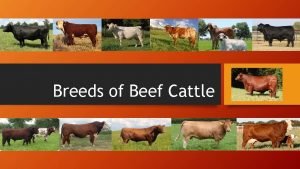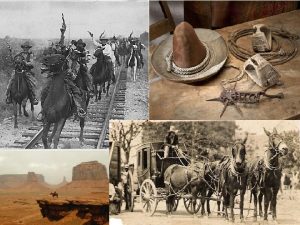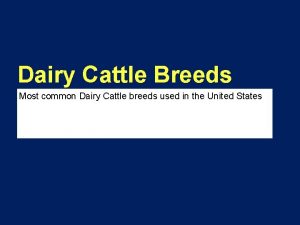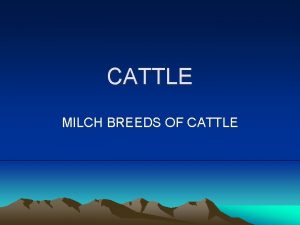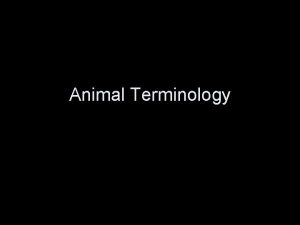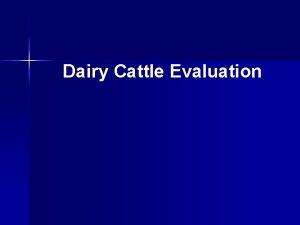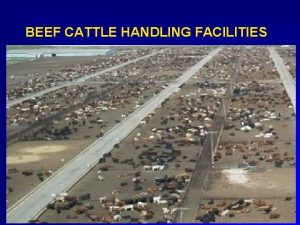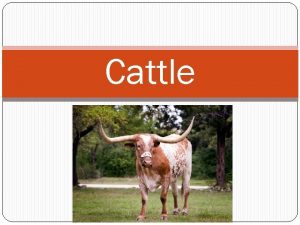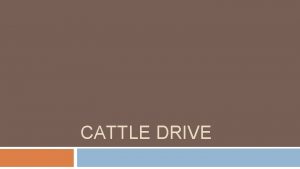Range Cattle Research and Education Center Ona FL























- Slides: 23

Range Cattle Research and Education Center - Ona FL Forage Testing Joe Vendramini Forage Specialist

Nomenclature üForage nutritive value = chemical composition, digestibility, and nature of digested products of forage üForage quality = product per animal. Forage quality is measured when forage quantity and animal genetic potential are not limiting, and forage is the sole source of energy and protein (Moot and Moore, 1985)

Nomenclature ü Protein ü CP = crude protein (%) ü Energy ü TDN = total digestible nutrients (%) ü GE = gross energy (Mcal/lb) ü ME = metabolizable energy (Mcal/lb) ü NE = net energy (Mcal/lb)

Nomenclature ü Fiber ü NDF = neutral detergent fiber (%) (hemicellulose, lignin) ü ADF = acid detergent fiber (%) (cellulose, lignin)

Nomenclature ü Forage Quality Indicator – Relative Feed Value (RFV) ü RFV = DMI*DDM/1. 29 DMI = 120 / NDF and DDM = 88. 9 – 0. 779*ADF

Nutritional Requirement ü Beef Cattle DM, TDN, and CP requirements Class DM (lbs) TDN (%) CP (%) Dry cow mid preg 27 48 7 Mature cow 10# milk 30 56 9 2 yr old lact cow 21 63 11

Supplementation Necessary corn supplementation to meet the requirement of a replacement heifer receiving hay with different TDN concentrations Hay (% TDN) Gain (lb/d) lb corn/heifer/d lb corn/100 d $/heifer/100 d* 48 1. 0 4. 4 440 33 54 1. 0 1. 1 110 8. 3 56 1. 0 0

Hay ü Hay value calculation: $/ lb TDN Example: $ 50 / round bale Weight (lb) TDN (%) TDN/bale $ / TDN 1000 60 600 0. 08 1000 50 500 0. 10 (20%)

Forage Nutritive Value Water (~ 80%) Dry Matter (~ 20%)

Forage Nutritive Value Water (~ 15%) Hay Dry Matter (~ 85%) Water (~ 65%) Silage Dry matter (~ 35%)

Forage Nutritive Value Dry Matter Protein Lipids Sugars Starch Pectin Cellulose Hemicellulose Lignin Mineral Vitamins

Forage Nutritive Value Protein (CP) %N x 6. 25 Dry Matter Energy (TDN) Cell contents Cell wall (Fiber)

Forage Nutritive Value ü Neutral detergent fiber has an inverse correlation with intake ü Acid detergent fiber has an inverse correlation with digestibility ü The majority of the laboratories uses ADF for energy determination in forages

Forage Nutritive Value Moore et al. , 1999

Forage Nutritive Value Forage species Lab 1 Lab 2 Lab 3 Lab 4 Lab 5 Lab 6 NFTA ADF Apparent DDM Estimate DDM % Stargrass 45. 0 51. 0 44. 2 48. 6 53. 8 51. 2 56. 7 48. 6 53. 8 Mulato 39. 0 64. 0 53. 5 53. 1 58. 5 58. 1 61. 5 53. 1 58. 5

Forage Sampling ü The result of the forage testing will be only as good as your sample ü The sample should be representative and collected correctly

Forage Sampling

Forage Sampling

Forage Sampling

Forage Sampling

Forage Sampling

Forage Sampling ü Samples should be placed in paper or plastic bags and mailed to the laboratory ASAP ü Fresh forage and haylage/silage may change the composition if stored for long periods of time after sampling

Questions? jv@ufl. edu
 Range cattle research and education center
Range cattle research and education center Cattle egret and cattle symbiotic relationship
Cattle egret and cattle symbiotic relationship National research center for career and technical education
National research center for career and technical education Trec homestead
Trec homestead As compared to long-range forecasts, short-range forecasts
As compared to long-range forecasts, short-range forecasts Sacral fat pad
Sacral fat pad Hooks and pins on cattle
Hooks and pins on cattle Some natural resources, such as wheat and cattle, are
Some natural resources, such as wheat and cattle, are 5 major types of species interactions
5 major types of species interactions Cattle of the sun god
Cattle of the sun god Nongqawuse story
Nongqawuse story Maji maji rebellion definition ap world history
Maji maji rebellion definition ap world history Texas cattle drive map
Texas cattle drive map Slidetodoc
Slidetodoc Withers pinch test in cattle
Withers pinch test in cattle Cow withers
Cow withers Osu master cattleman program
Osu master cattleman program Vagus indigestion in cattle
Vagus indigestion in cattle Frame size muscle thickness and thriftiness
Frame size muscle thickness and thriftiness Beef cattle parts
Beef cattle parts Conveyor belt cattle feeder
Conveyor belt cattle feeder Limousin jersey cross
Limousin jersey cross What cow give us
What cow give us Calculate stocking rate
Calculate stocking rate
